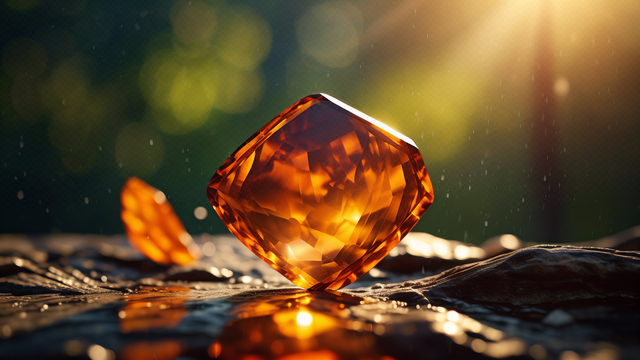
The Unique Charm of Amber: Nature’s Fascinating Gemstone
Introduction
Amber, often revered as one of nature's most enchanting gemstones, has captivated people for centuries with its warm hues and rich history. Unlike traditional gemstones formed through geological processes, amber is fossilized tree resin, created over millions of years. In this article, we’ll explore the origins of amber, its properties, various uses, and why it remains a sought-after material in jewelry and alternative medicine.
What is Amber?
Amber is not a mineral; rather, it is a natural organic substance formed from the resin of ancient trees. Over time, this resin undergoes a polymerization process, hardening and transforming into the amber we admire today. The color of amber can range from deep yellow to honey brown, and even green or blue in rare cases. Its unique qualities make it a popular choice in jewelry and decorative arts.
The History and Cultural Significance of Amber
Amber has been used by various cultures throughout history for its beauty and supposed healing properties. In ancient times, it was believed to have protective qualities and was often used in amulets. The Greeks called amber "electron," from which the term "electricity" is derived, due to its ability to produce static electricity when rubbed.
Cultural Uses:
- Jewelry: From ancient Rome to modern-day, amber has been fashioned into beautiful pieces of jewelry including necklaces, bracelets, and earrings.
- Art and Decoration: Skilled artisans carve amber into intricate sculptures and decorative objects, showcasing its beauty and versatility.
The Benefits of Wearing Amber
Many people believe that amber possesses various healing properties. Though scientific evidence is limited, amber is often associated with:
- Pain Relief: Some proponents claim that wearing amber can help alleviate pain, particularly in children teething.
- Stress Reduction: Amber is thought to promote a sense of calm and reduce anxiety levels.
- Enhanced Energy: Many believe that amber can balance life forces, promoting overall well-being.
While these claims may lack extensive scientific backing, many individuals enjoy the aesthetic appeal of amber alongside these potential benefits.
Choosing Authentic Amber
When shopping for amber, it’s essential to differentiate between genuine amber and synthetic or treated variations. Here are a few tips to ensure you purchase authentic amber:
- Color and Clarity: Genuine amber often contains inclusions, such as air bubbles or plant material. These irregularities add character and authenticity.
- Weight: Amber is lightweight; if a piece feels unusually heavy, it may be a fake.
- Heat Test: Rubbing amber against fabric can create static electricity; genuine amber will attract small pieces of paper or hair.
- Certificate of Authenticity: Consider purchasing from reputable sellers who provide certificates verifying the authenticity of the amber.
Caring for Amber Jewelry
To keep your amber jewelry looking its best, consider these care tips:
- Avoid Harsh Chemicals: Clean with warm soapy water and a soft cloth.
- Store Properly: Keep amber jewelry away from direct sunlight and extreme temperatures to prevent damage.
- Handle with Care: Although amber is durable, it can scratch easily, so handle it gently.
Conclusion
Amber is a gemstone that blends beauty, history, and cultural significance. Its warm colors and unique properties make it a cherished material in jewelry and crafts. Whether you are drawn to amber for its aesthetic charm or its potential healing benefits, embracing this natural gem allows you to connect with a rich legacy that spans thousands of years.
AD
article by 52ctf is licensed under CC BY-NC-ND 4.0